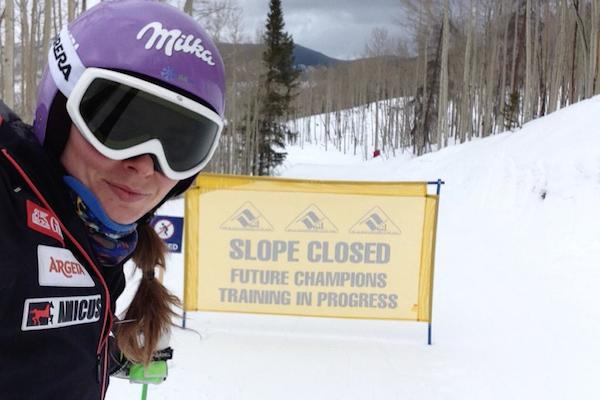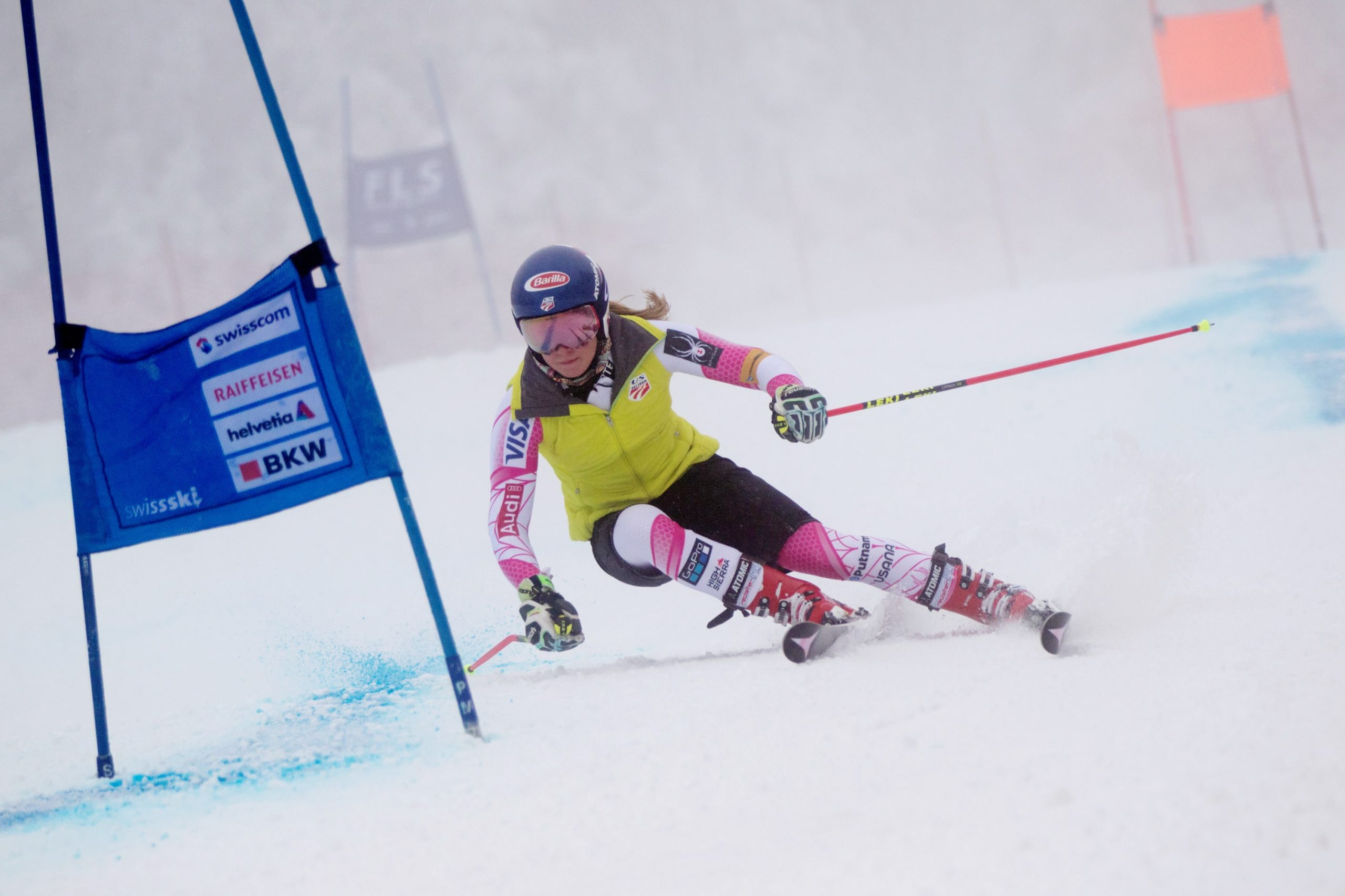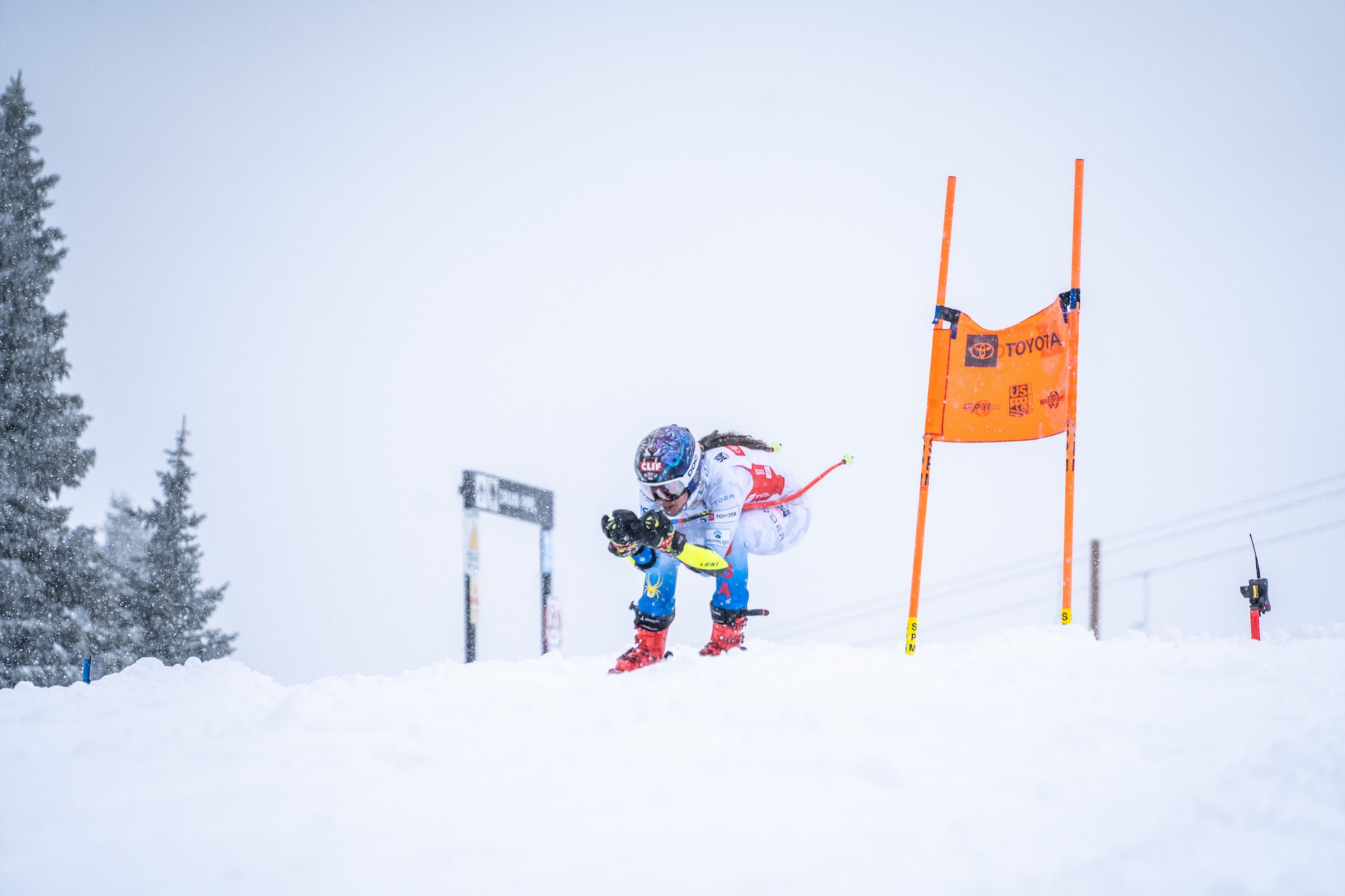
With the ski season comes ski racing season. Most ski resorts are happy to support their local ski teams, and some also open their doors to neighboring clubs or even international teams. Hills such as Copper Mountain in Colorado and Nakiska Ski Area in Alberta, Canada, regularly see multiple teams ranging in caliber from local U14 athletes to World Cup superstars. Race training requires a controlled environment to allow athletes to push limits and reach the high speeds that contribute to the excitement of ski racing.
Training for Ski Racing is dangerous on its own. Each run is monitored from the sidelines by coaches, and the snow itself in the racing environment is meticulously curated with any excess or soft snow being pushed out of the way. When dealing with the speed that comes with the sport, the athlete on course has to be as focused on the training run as possible. If someone decides to sneak into the race environment and ventures too close to a course it could very easily spook the athlete, causing them to make a mistake that could lead to a crash and possibly an injury. Small mistakes can lead to disaster and major injury, even in closely controlled environments.
While not every crash is a season-ender, they can happen quite often when these athletes are pushing as hard as they can. Most training wipe-outs are typically harmless hip-slides, getting tossed off the course by the return of a ski bend or being jostled by the rutted-out snow. These minor incidents usually leave an athlete with a bruised ego, but this is because of the nature of the controlled training environment. The average professional speed in a Giant Slalom is around 25mph (45km/h), with Super G speeds being exponentially higher. If a lost recreational skier found themselves on one of these courses and were in the way of one of these seemingly harmless wipe-outs, neither trespasser nor athlete would win. Any collision at alpine race speeds would cause tremendous damage to both the athlete and the bystander. While being hit by a 200lb ball of muscle surrounded by carbon fiber protection on skis (which alone could cause massive lacerations, see: Bode Miller, Beaver Creek), traveling at up to 60mph (100km/h) may sound fun to some people, most athletes tend to agree that they’d rather go without such an experience.

On top of the physical risk that presents itself to both the athlete and lost bystander, encroaching onto a closed training environment takes time away from the athletes. These training environments are typically booked and paid for in blocks dictated by timeframes. By standing in the way of a training run, a recreational skier causes a delay at the start and cuts into training time. Every training run counts, and forcing an athlete to abandon a run by being in the way is unfair for them and affects the productivity of their training day. On top of that, if an injury were to occur, training would screech to a halt and would likely end the training day for the whole team.
It’s okay if ski racers aren’t your favorite people on the mountain. Remember that they are there to do a job and need a closed, safe environment. These environments help create world champions like Lindsey Vonn and Mikaela Shiffrin that people LOVE to cheer for on TV. Trust us: the best snow on the mountain isn’t on the racecourse, and if you REALLY want to ski that run, usually you can wait until the training session is over and it’ll be back open to the public.
